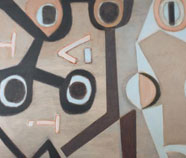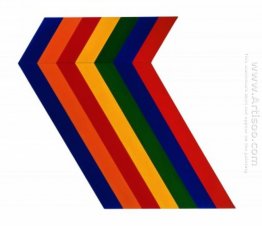Hard Edge Painting

Hard-Edge Painting was a form of abstraction, primarily geometric, that dominated the 1960s in the United States. It assumed an importance previously held in the postwar years by Abstract Expressionism. In contrast to the spontaneous brushwork and free forms of Abstract Expressionism, the new abstraction favored clear-cut and brightly colored compositions. The shape of the canvas, suggesting an object in its own right, was often an equally important design element. Unlike the metaphorical and existential interpretations, Abstract Expressionism - analytic readings of the new American abstraction of the 1960s - favored pure color and form for its own expressive sake.
The term Hard Edge painting was first used in 1958 by the Los Angeles critic Jules Langsner to describe the abstract canvases of West Coast painters uninterested in the brushy gesturalism of Abstract Expressionism. The following year, the critic Lawrence Alloway applied the term to American paintings with surfaces treated as a single flat unit. The distinction between figure and background was eliminated in favor of the all-over approach pioneered by Jackson Pollock a decade earlier. Unlike Pollock’s free-form compositions, Hard Edge paintings are typically geometric, symmetrical, and limited in palette. Other precursors from the 1950s include Ad Reinhardt, Leon Polk Smith, and Alexander Liberman.




